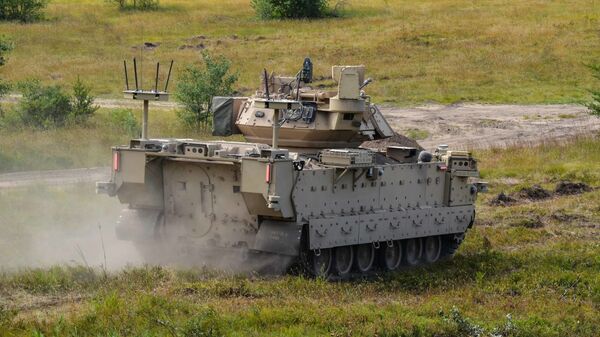“We’re taking a lot of technology, we’re experimenting and this experiment was 100% successful,” Brig. Gen. Ross Coffman, director of the Army’s Next Generation Combat Vehicles (NGCV) Cross Functional Team, expressed to reporters during a Thursday briefing, as reported by Defense News.
“The whole purpose was to learn where the technology is now and how we think we want to fight with it in the future.”
However, Coffman noted, the success of the service’s experiment does not necessarily translate to actual acquisition progress in the robotic combat vehicle (RCV) effort.
“Some [technology] knocked our socks off, and some we’ve got a little bit of work to do,” he admitted. “But that is why we do these things, so we can do it at small scales, so we can learn, save money and then make decisions of how we want to fight in the future.”
Nevertheless, the Army, with the help of unnamed companies, has been able to confront and sometimes overcome the technological hurdles of RCVs, such as the communication between robot and controller, according to Coffman.
“We went after them with [electronic warfare], we saw they were self-correcting, so that if they’re on one band, they can switch to another,” he said, “so we have a really good idea of what is in the realm of the possible today.”
Coffman said that progress in using the current communication waveforms available to the RCV program could present an opportunity for the Army to be able to make battlefield decisions “faster and more effectively.”
“If you could extend the battlefield up to 2 kilometers with a robot, then that means that you can make decisions before your enemy came,” he explained.
The NGCV director went on to confess that the software connecting the robot and a Bradley Infantry Fighting Vehicle - the experiment’s control vehicle - was “not perfect,” but managed to perform above the service’s expectations. According to Coffman, the software allowed the robot to move some 80 to 1,000 meters ahead of the vehicle, as well as identify enemy coordinates.
“I didn’t know how that was going to work,” Coffman said. “There were some challenges that we had, like getting exact granularity at distance, but the ability that we could identify hot spots and enemy positions I thought was absolutely exceptional.”
The service also conducted a “side experiment,” according to Defense News, which debuted a robotic version of the Stryker Dragoon infantry combat vehicle and included live fire. The vehicle, which comes equipped with a 30-millimeter cannon, utilized the same hardware and software as the control vehicles, Coffman said.
The Army’s reported achievements come alongside the Government Accountability Office’s release of recommendations for NGCVs. However, when it came to RCVs, the agency emphasized that “no acquisition approach has been selected” for the program, as of the August 6 release.
The GAO report detailed that ongoing demonstrations are being carried out with various prototypes so that the service can “fail fast” or succeed and pursue “a formal acquisition program with more mature concepts.”
Looking forward, the Army intends to hold a demonstration at Fort Hood, Texas, in the first quarter of fiscal year 2022, Defense News reported. The experiment will serve as the follow-up operation to Coffman’s Fort Carson tests and is slated to include four medium RCV prototypes and four light variants.
In the meantime, defense contractors Textron Systems and Howe and Howe Technologies Inc. each have a team developing their own medium RCV prototypes for the service. The light variants are being developed by QinetiQ North America Inc. and Pratt & Miller Engineering.
The four companies were each awarded Army contracts back in January.


